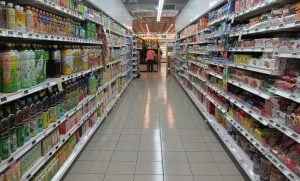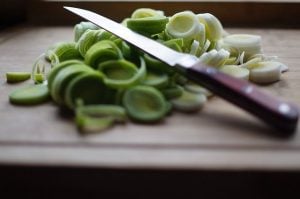Good handling of food during this Covid-19 pandemic is very important in preventing its spread. This is because the novel coronavirus can survive on different surfaces for long periods which can cause infection should one get into contact with such surfaces.
Supermarkets, open markets and groceries are among risk areas where the risk of transmission is high due to the number and diversity of people that pass through its aisles every day.

It’s therefore good to be vigilant when visiting these areas to minimize the risk of infection and spreading of the virus to other shoppers. The following are some precautions you can take while shopping for your foods:
- Don’t go shopping with your children or the whole family. Children are typically curious and playful inevitably leading them to come into contact with many of the surfaces and items within their reach. This puts them at a greater risk of getting infected.
- Wear a protective face mask and keep a social distance of 1.5 meters from one person to the another. This will reduce person to person contact and ensure virus-laden droplets from a person coughing or sneezing don’t come into contact with you.
- If possible, sanitize the shopping cart or basket handles. Handles can be a reservoir for this virus which can survive there for more than eight hours. Sanitization will eliminate this virus thus reducing the chances of infection. You can also use gloves to minimize this but remember to dispose or disinfect them appropriately after use.
- Have a shopping list for everything you intend to buy. This will reduce the time you spend finding items as well as help reduce congestion in these often crowded places.
- Minimize how often you have to touch food stuffs and other items on the shelves to reduce the risk of spreading the virus to other shoppers. Identify what you want to buy, take it and don’t return. This is because most packaging materials are made of plastic on which it has been shown the virus can survive for up to 72 hours.
- Remember to also keep a distance of 1.5 meters at the checkout line as we tend to be impatient or in a hurry at these points leading to crowding. Both customers and cashiers have to adhere to this policy however it may be necessary for the management to put extra measures to ensure this is observed.
- Use cashless modes of payment but if this is not possible make sure to sanitize every time you exchange money, be it paper or coin money.
- Sanitize after receiving your takeaway bag, but as a precaution you can carry your one bag from home and do the packing for yourself.
- Sanitize the handle of cars, gate/house door knobs and any other surfaces that have been touched by any individual that were outside the home.
- The other risk area is during food preparation. For foods packaged in plastic, metal or other materials, wipe them down with soap and water or an alcohol-based disinfectant before using or storing. For unpackaged foods such as fruits and vegetables wash them thoroughly with clean running water before eating or cooking.
- Cook your food well for the appropriate time. During cooking, ensure you have cooked them for at least 5 minutes as the virus cannot survive in high temperatures. Moreover, it’s good practice to wash the chopping board using soap for more than 20 seconds and rinse with clean running water.
- If you buy takeaway food, don’t eat from the container or bag its packaged in. Empty the food into your plate, wash your hands before eating. This routine should also be observed for food deliveries.
Lastly, don’t forget to wash your hands with soap frequently in running water, stay home if you have no important business going out and don’t encourage visitors at your homes during this time. Stay safe!





